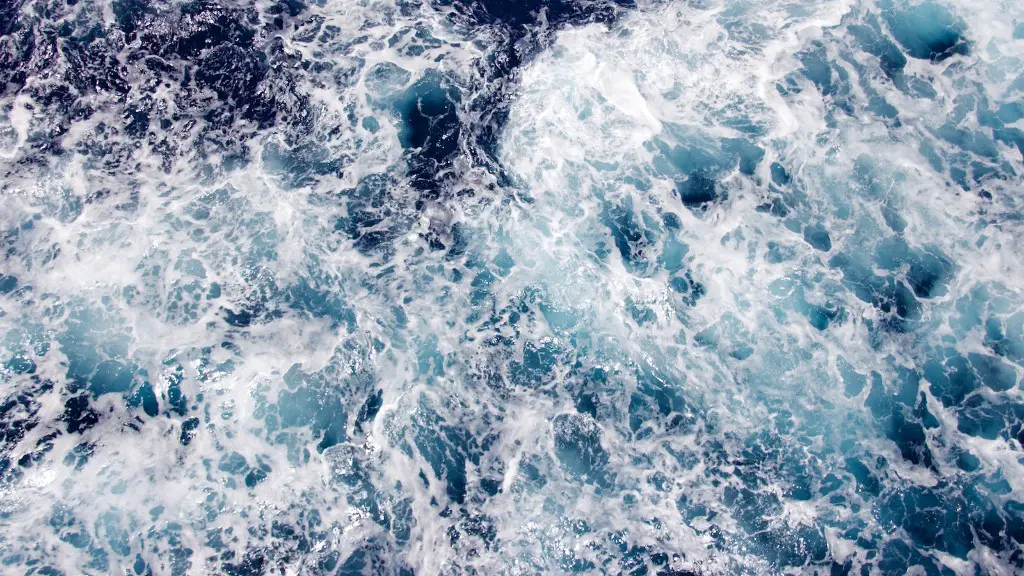Origin of the Territorial Claim
The South China Sea dispute is an ongoing territorial conflict between several claimants, namely China, Taiwan, the Philippines, Vietnam, Malaysia, and Brunei. The dispute is primarily concerned with the ownership of a number of small islands, islets, and reefs, some of which may also hold potential for mineral, oil, and gas resources. The area has been a source of territorial tension since the 1950s, when the various claimants began to assert their sovereignty over the area.
Initially, the ownership of the islands was disputed on cultural and historical grounds, as the sovereignty of the South China Sea has been contested by multiple claimants since at least the 2nd century BCE. With the advances of modern technology and satellite imagery, the claimants have come to realize the geopolitical and economic importance of the South China Sea to the global economy, and the conflict has become a subject of much international discussion.
Chinese Expansionism
In recent years, the dispute has become increasingly tense, with China accused of using its naval dominance in the South China Sea to advance its claims. In the mid-1990s, China introduced the 9-dashed line, which demarcates its maritime border claims in the South China Sea and has been a topic of contention ever since. In the past few years, there have been reports of Chinese ships harassing fishing boats from other South China Sea claimants, and even building military outposts on some of the disputed islands.
China has also been issuing fishing permits to vessels from non-claimant states, which has caused further concern amongst its rivals. In addition, China has increasingly demonstrated its military capabilities in the region, including missile tests and aerial exercises, which is viewed by some as an attempt to bully other countries.
Reactions by Other Nations
In response to China’s activities in the South China Sea, some of the other claimants in the dispute have increased their own military capabilities, particularly the Philippines and Vietnam. Other countries, such as the United States, have sought to counter China’s activities by sending warships and submarines into the region to conduct “freedom of navigation” exercises. The US has also held military drills with some other South China Sea claimants in a show of solidarity.
The United Nations has also expressed its concern over the dispute and has sought to settle it through international law. In 2016, the International Tribunal of the Law of the Sea (ITLOS) issued a ruling on the dispute affirming the territorial lines of other claimants such as the Philippines in the South China Sea but not those of China.
The Impact of Covid-19
The Covid-19 pandemic has had a major impact on the South China Sea dispute, with several countries accusing China of exploiting the crisis to advance its claims. In late March 2020, China dispatched a survey vessel and coast guard ships to Vietnam’s Exclusive Economic Zone in the South China Sea, which were seen by some as an attempt to press its claims in the region.
In response, several major countries, including the United States, France, and Japan, issued joint statements expressing concern and calling on all parties to refrain from activities that could further escalate tensions in the region.
Impacts on the Global Economy
The South China Sea dispute has had a significant impact on the global economy. With multiple countries claiming a multitude of resources in the area, there is much at stake for the countries involved, and any escalation of the conflict could have serious repercussions for the global economy and trade.
The South China Sea is a major shipping corridor, carrying approximately $3.4 trillion worth of trade each year and providing vital energy resources to countries in the region. Any disruption of shipping in the area could have a major impact on the global economy and could even lead to war.
The Role of Diplomacy
Given the importance of maintaining peace in the South China Sea, there has been increasing pressure on the claimants to engage in diplomacy and reach a peaceful solution to the dispute. In 2002, the Association of Southeast Asian Nations (ASEAN) and China signed the “Declaration on the Conduct of Parties in the South China Sea”, in which both parties agreed to settle disputes peacefully through negotiations.
Since then, the parties have met annually to discuss the dispute and negotiate on possible solutions. Nonetheless, progress on resolving the dispute has been slow, with the various claimants unable to reach a consensus on the issue.
The Potential for Conflict
There have been increasing concerns that the South China Sea dispute could lead to military conflict between the various claimants. In recent years, several claimants have taken measures to increase their military presence in the area, and there have been several notable incidents of armed conflict, such as the Scarborough Shoal standoff between the Philippines and China in 2012.
Given the geopolitical importance of the South China Sea and the ongoing territorial disputes, the potential for conflict, and the consequences it may have for the global economy, should not be underestimated.
China’s Response to International Criticism
With the increased international attention on the South China Sea disputes, China has begun to take a more assertive position in defending its claims. It has repeatedly stated that it has no intention to compromise its sovereignty over the area, and it has increasingly relied on both diplomatic and military means to ensure its claims are not challenged.
China has also accused some of the other claimants of infringing on its rights and sovereignty, and has made clear that it will not accept any interference by external powers in regional disputes. China has also sought to strengthen its alliances in the Asia-Pacific region, and has stepped up its diplomatic efforts to convince other countries to accept its claims in the South China Sea.
Impacts of Regional Power Dynamics
The South China Sea dispute is not just a territorial dispute, but is also intertwined with the broader power dynamics in the Asia-Pacific region. China and the other claimants, particularly the United States and Japan, have been locked in a power struggle in recent years, with regional power and influence at stake.
The dispute over the South China Sea can be seen as part of this broader power struggle, with China seeking to assert its supremacy in the region and the other claimants attempting to maintain their own influence and power. This has created a tense situation in the region, with some analysts warning that further escalation of the dispute could even lead to war.
Potential Solutions to The Conflict
With the various claimants unable to reach a consensus on the dispute, and tensions in the South China Sea continuing to rise, there is a need for a peaceful, diplomatic solution to the conflict. The 2002 Declaration on the Conduct of Parties has provided some hope for a peaceful resolution, however, the lack of progress in negotiations is a cause for concern.
A possible way forward could be an internationally-backed framework, in which the claims of all claimants would be legally recognized and disputes would be settled through negotiation. To facilitate this, the UN, ASEAN and other multilateral organizations could act as mediators, and all of the claimants could agree on a framework for the peaceful resolution of disputes.


